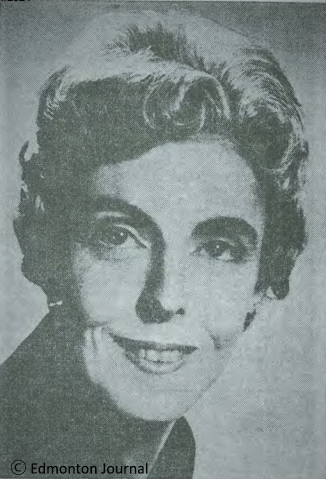About Ruth Gorman

Above all else, Ruth Gorman (1914-2002) was a fierce human rights activist who fought to rectify injustices. A proud lifelong Calgarian, she was a wholehearted believer in democracy and governmental systems. However, Gorman felt strongly that the people needed to hold their government accountable and to take action. She dedicated her life to advocating for Indigenous Peoples, women, and people with disabilities.
Gorman was also a lawyer and this legal expertise certainly bolstered her political activism. Her volunteer role as a solicitor for the Indian Association of Alberta (IAA) led to her involvement with the Hobbema Case where she successfully fought for reserve Treaty Rights. Although a victory, it was bittersweet with the remaining threat of compulsory enfranchisement. The fight continued and in 1960 Gorman and representatives convinced the federal government to amend the Indian Act resulting in Indigenous Peoples' ability to vote while maintaining their treaty rights.
Throughout her life, Gorman took strong political stances and frequently shared her opinions in newspapers and magazines, as well as through her work with the Western Canada Concept Party of Alberta (WCC). She passionately opposed the Trudeau government's proposal to patriate the Canadian constitution and continued to speak out against it even after the Act was passed in 1982. In her self-published magazine, My Golden West (1965-1975), Gorman continued to voice her perspectives on current-day events.
While Gorman was undoubtedly a strong female political activist and effected long-lasting changes in Canadian history, she also encountered difficulties owing to gendered conventions of the time. In her writings, she provides unfiltered realities about living in "a man's world." Gorman herself frequently downplays the importance of her own role as a supporting character, yet she directly impacted the course of Canadian history.
As a true friend and ally to Indigenous communities, Gorman's advocacy ultimately contributed to greater Indigenous autonomy and empowerment. However, there existed simultaneous complex racial and gender dynamics that permeated Gorman's activities. This project is an invitation into some of those complexities and an exploration of Gorman's life and passions.
Gorman herself wrote a book that is part biography of her colleague John Laurie and part autobiography of her own experiences. The book, titled Behind the Man (2007), provides additional insights and contexts. This site offers a way to explore various parts of Gorman's life using the interactive timeline or browsing thematic groupings in the navigation bar.